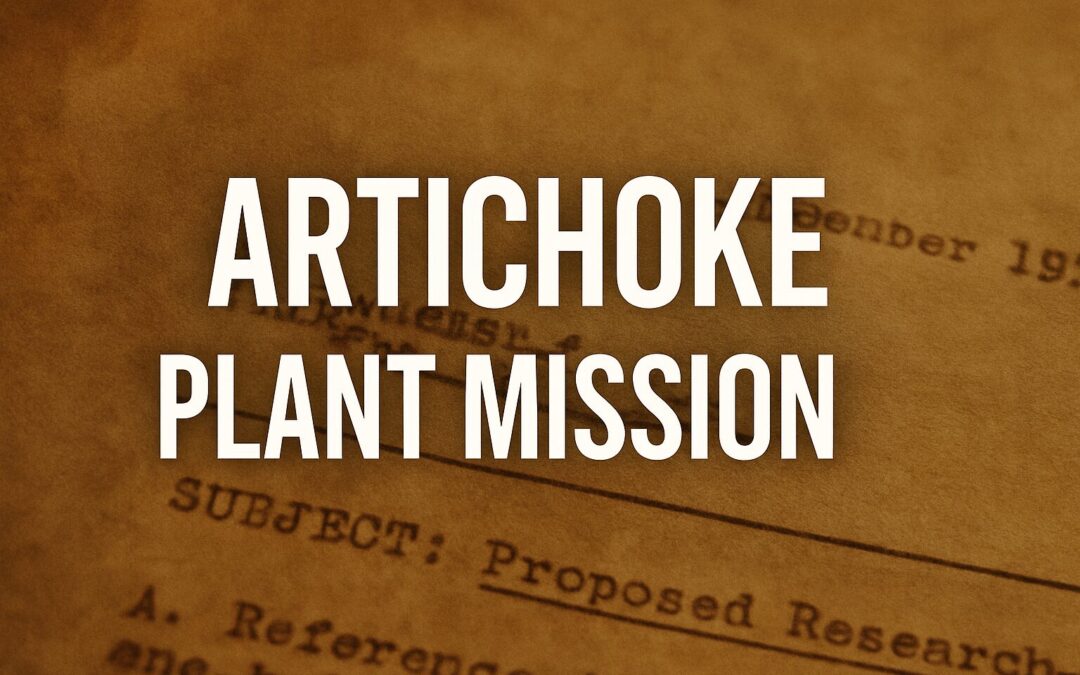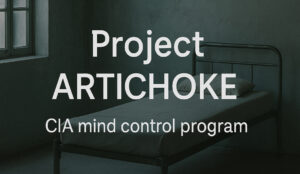In late 1952, a CIA scientist was quietly preparing for a multi-week research mission into the jungles and highlands of Mexico. His goal wasn’t academic. It was operational.
He was tasked with locating, testing, and extracting specific narcotic and toxic plants believed to possess powerful psychological effects.
Plants like Piule, and several species of hallucinogenic mushrooms, including the mushroom Paneolus campanulatus.
"These plants have strong narcotic-toxic properties which are of vast interest to ARTICHOKE."
🔍 What Is Piule?
Piule refers to a class of psychoactive plants used traditionally in ritual ceremonies by indigenous communities in Central and South America. The 1952 memo highlights Piule’s:
-
Strong hallucinogenic and narcotic properties
-
Use in ceremonial rites by Indian tribes
-
Potential for “mental derangement” as observed in Soviet mushroom experiments
At the time, very little was documented in English-language scientific literature. The CIA aimed to change that-privately.
🧪 A Mission in Three Phases
The memo lays out a detailed mission plan:
-
Travel to key areas of Mexico and South America where these plants are used.
-
Secure contacts under cover, including botanists and local guides.
-
Collect live samples, including seeds and mushrooms, for export to U.S. labs-bypassing quarantine laws when necessary.
"Authorization was sought to pass quarantine for plants and seeds into the United States."
The researcher would carry all necessary chemical and biological testing equipment and operate under a medical research cover story.
🧬 Why Mushrooms?
The report pays special attention to toxic and psychoactive mushrooms, especially those known to produce trance-like or hallucinatory states. The CIA was interested in:
-
Mental disorientation
-
Disrupted memory
-
Emotional pliability
A specific line notes Soviet interest in these same mushroom types for their ability to induce psychosis-like symptoms-another clear signal of Cold War pharmacological competition.
"It is known that Russians have used narcotic mushrooms to produce mental derangement for some time…"
🎭 A Cover Story for Covert Extraction
The CIA field agent would pose as a medical researcher examining narcotic drugs for anesthesiology.
The memo stressed that this cover was sufficient to provide full freedom of movement.
He would carry:
-
Chemical assay kits
-
Preserved plant storage gear
-
Funds for specimen purchase, guides, and transportation
-
No documents that might hint at the true purpose
Everything was designed for maximum deniability.
🧾 The Stakes and the Timeline
Timing was critical. Plant maturity and harvesting windows were narrowing. The report stressed the need for immediate departure, with a mission timeline of 30 to 60 days.
The CIA granted the highest urgency designation and recommended up to $2,000 in operating funds-equivalent to over $20,000 today.
This wasn’t a speculative study. This was extraction and preparation for testing in human behavior control.
🕳️ Artichoke’s Organic Arsenal
The "Proposed Research" memo is part travel log, part intelligence blueprint. Its subtext is unmistakable: the CIA wanted to control not only substances-but the natural sources of those substances.
And it was willing to cross borders, violate quarantine law, and co-opt indigenous plant knowledge to do it.
This was early ARTICHOKE at work-testing what could be found in nature, then turning it into a weapon of the mind.






